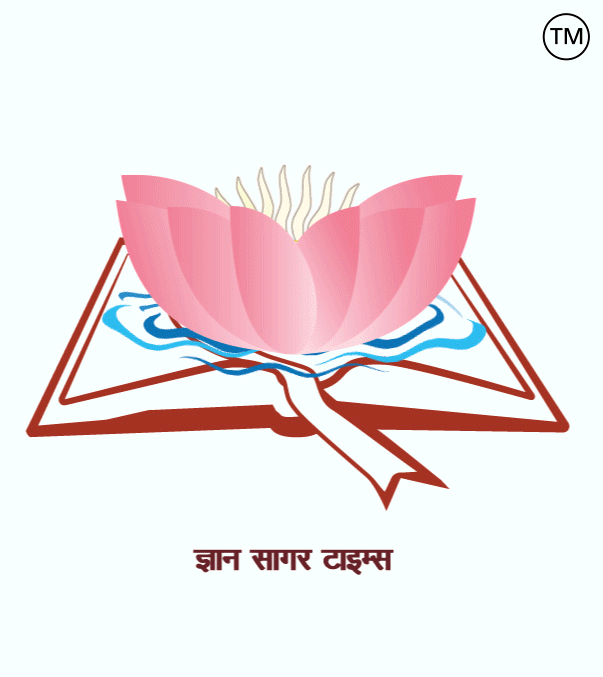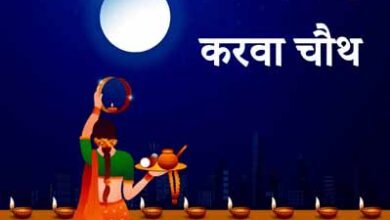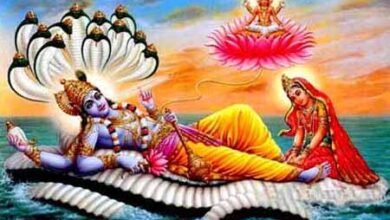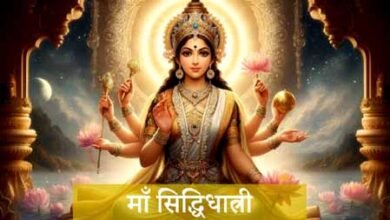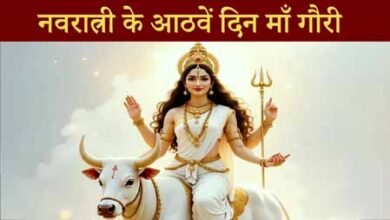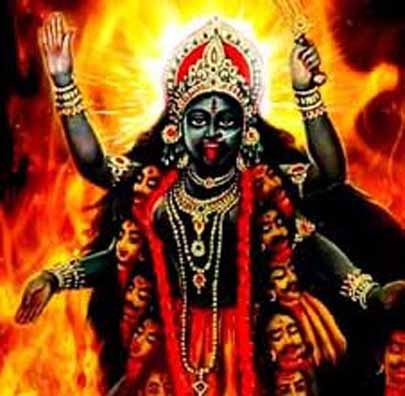
मां काली…
“ॐ क्रीं कालिकायै नमः”
आमतौर पर लोग दो नवरात्रों की पूजा-आराधना करते है जबकि दो और नवरात्रों के बारे में जानकारी नहीं के बराबर है. हिन्दू पंचांग के अनुसार वर्ष में 12 महीने होते हैं उन्हीं 12 महीनों में चार नवरात्र की पूजा आराधना होती है. वर्ष के शुरुआती महीने चैत में नवरात्री की पूजा-आराधना की गई थी. अब चार महीने बाद अषाढ़ में माँ शक्ति की अराधना शुरू हो रही है. पौराणिक ग्रंथों में भी गुप्त नवरात्र की चर्चा की गई है.
तन्त्र साधकों के लिए गुप्त नवरात्रि ही ख़ास होता है. इस दौरान साधक माँ की आराधना रात्रि में ही करते हैं. गुप्त नवरात्रि की पूजा के नौ दिनों में माँ दुर्गा के नौ स्वरूपों की बजाय दस महाविद्याओं (दस महाविद्याएं :- मां काली, तारा देवी, त्रिपुर सुंदरी, भुवनेश्वरी, छिन्नमस्ता, त्रिपुर भैरवी, मां धूमावती, बगलामुखी, मातंगी और कमला देवी) की पूजा की जाती है.
गुप्त नवरात्री के पहले दिन मां काली की आराधना की जाती है. जिनका स्वरूप अज्ञान, अधर्म और अंधकार के विनाश का प्रतीक है. उनका नाम “काली” संस्कृत शब्द “काल” से लिया गया है, जिसका अर्थ है समय – जो सब कुछ निगल जाता है. मां काली को समय की शक्ति, मृत्यु की देवी और ब्रह्मांडीय परिवर्तन की अधिष्ठात्री माना जाता है.
मां काली का स्वरूप अत्यंत भयावह है, परंतु यह उनके आंतरिक गुणों और शक्तियों का प्रतीक है: – उनका गहरा काला रंग अज्ञान और अंधकार का प्रतीक, साथ ही अनंत ब्रह्मांडीय ऊर्जा का द्योतक है. उनकी चार भुजाएं हैं जिनमें एक हाथ में तलवार, दूसरे में राक्षस का कटा हुआ सिर- जो अहंकार और अधर्म के अंत का प्रतीक हैं. अन्य दो हाथों से वे आशीर्वाद और सुरक्षा प्रदान करती हैं. उनके बिखरे हुए केश उनकी असीमित शक्ति और स्वतंत्रता को दर्शाते हैं.
उनकी बाहर निकली हुई लाल जीभ क्रोध और तामसिक वृत्तियों के संहार का प्रतीक है. यह इस बात का भी संकेत है कि वह अज्ञान और अहंकार को निगल जाती हैं. मां काली अपने गले में मुंड माला (नरमुंडों की माला) धारण करती हैं, जो अहंकार, मोह और आसक्ति के नाश का प्रतीक है. उनके करधनी में लटके हुए कटे हुए हाथ कर्मों के फल का प्रतीक हैं और यह दर्शाते हैं कि वह सभी कर्मों के साक्षी हैं और उन्हें नियंत्रित करती हैं.
कथा: –
एक बार रक्तबीज नामक असुर को वरदान प्राप्त था कि उसके रक्त की हर बूंद से एक नया राक्षस उत्पन्न हो जाएगा. जब देवता उसे पराजित नहीं कर पाए, तब मां दुर्गा ने अपने क्रोध से मां काली को उत्पन्न किया. काली ने युद्धभूमि में रक्तबीज का वध किया और उसकी हर रक्तबूंद को पीकर नए राक्षसों को जन्म लेने से रोका. इस प्रकार उन्होंने अधर्म का अंत किया.
मां काली की उपासना विशेष रूप से तांत्रिक परंपराओं में अत्यधिक महत्वपूर्ण मानी जाती है। उन्हें मोक्ष और मुक्ति की देवी के रूप में पूजा जाता है. उनकी उपासना भय, नकारात्मकता और अज्ञान को दूर करती है. माँ काली की पूजा विशेष रूप से पश्चिम बंगाल, असम, ओडिशा और अन्य पूर्वी भारतीय राज्यों में बड़े धूमधाम से मनाई जाती है.
मां काली का स्वरूप जितना भयावह प्रतीत होता है, उतना ही वह करुणामयी और रक्षक भी है. उनका स्वरूप भले ही उग्र हो, पर वे अपने भक्तों के लिए परम कल्याणकारी और मोक्षदायिनी हैं.
========== ========= ===========
Maa Kali…
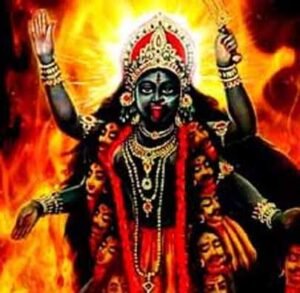
“Om Kreem Kalikaye Namah”
Usually, people worship two Navratris, while there is little information about the other two Navratris. According to the Hindu calendar, there are 12 months in a year, and the four Navratris are worshipped in those 12 months. Navratri was worshipped in the first month of the year, Chaitra. Now, after four months, the worship of Maa Shakti is starting in Ashadh. Gupta Navratri has also been discussed in mythological texts.
Gupt Navratri is special for Tantra practitioners. During this time, practitioners worship the mother only at night. In the nine days of worship of Gupta Navratri, instead of the nine forms of Maa Durga, ten Mahavidyas (ten Mahavidyas: Maa Kali, Tara Devi, Tripur Sundari, Bhuvaneshwari, Chhinnamasta, Tripur Bhairavi, Maa Dhumavati, Baglamukhi, Matangi and Kamala Devi) are worshipped.
On the first day of Gupt Navratri, Maa Kali is worshipped. Her form symbolizes the destruction of ignorance, evil and darkness. Her name “Kali” is derived from the Sanskrit word “Kala”, which means time – that which swallows everything. Maa Kali is considered the power of time, the goddess of death and the presiding deity of cosmic change.
Maa Kali’s form is extremely frightening, but it is a symbol of her inner qualities and powers: – Her deep black colour is a symbol of ignorance and darkness, as well as infinite cosmic energy. She has four arms, one of which holds a sword, the other a severed head of a demon, which symbolizes the end of ego and evil. With the other two hands, she provides blessings and protection. Her scattered hair shows her unlimited power and freedom.
Her protruding red tongue symbolizes the destruction of anger and vengeful instincts. It also indicates that she swallows ignorance and ego. Maa Kali wears a garland of human heads around her neck, which symbolizes the destruction of ego, attachment and passion. The severed hands hanging from her girdle symbolize the fruits of karma and show that she is the witness of all actions and controls them.
Story: –
Once, an asura named Raktbeej was blessed with a boon that a new demon would be born from every drop of his blood. When the gods could not defeat him, Maa Durga created Maa Kali from her anger. Kali killed Raktbeej on the battlefield and drank every drop of his blood to prevent new demons from being born. Thus, she ended the evil.
The worship of Maa Kali is considered extremely important, especially in the Tantric traditions. She is worshipped as the goddess of salvation and liberation. Her worship removes fear, negativity and ignorance. The worship of Maa Kali is celebrated with great pomp, especially in West Bengal, Assam, Odisha and other eastern Indian states.
As much as Maa Kali’s form appears fearsome, she is equally compassionate and protective. Even though her form may be fierce, she is the ultimate benefactor and giver of salvation to her devotees.

